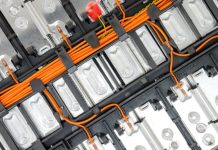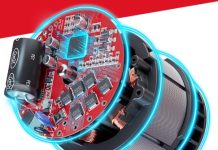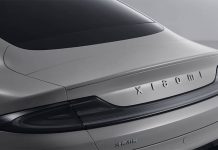The great success of Electric Motors Talks is back, joint initiative by University of L’Aquila and by Coiltech to promote the exchange of know-how among Coil Winding specialists and related fields.
The success of the first series in Spring/Summer 2021 with 8 sessions that have involved the participation of 853 highly skilled technicians coming from 83 nations has encouraged to continue also in 2022 this series of vertical events for the specific sector.
On February 2nd, it was the turn of the in-depth analysis about Automotive Industry – Battery and EV Charging.
The first face that appeared was the one of Sebastian Kuester, CEO QUICKFairs, who presented the participants and explained in detail their various proveniences.
The floor was then given to the moderator of the workshop Prof. Marco Villani, professor of Electrical Machines Design and Electric Systems for Mobility at the University of L’Aquila.
The theme is very important and crucial because the automotive electric market is growing and in the next 20 years electric motors will supplant traditional combustion motors. Therefore, their efficiency is more and more important.
Concerning batteries, Prof. Villani highlighted that it is necessary to work at three fundamental aspects: the energy density, the useful life and the recycling processes.
Circular EV battery industry in Europe
The first speech was cared by Philipp Seidel from Arthur D.Little and highlighted the opportunities and challenges for a circular EV battery industry in Europe. Consistently with the company’s mission, that is focusing on technology, innovation and sustainability from all angles, the expert said that «An important issue for electric vehicles and green mobility applications in Europe is characterized by batteries, their circularity and the important components. Battery recycling is one driver to make e-mobility more sustainable».
Battery recycling decreases environmental footprint of batteries, by how much it depends on parameters.
 Another fundamental datum worth knowing concerns vehicles’ growth: 70% of all newly registered vehicles will be electric in 2030. So, rising EV car park of 61 million electric vehicles leading to enormous volume of EV batteries returning from their usage in cars.
Another fundamental datum worth knowing concerns vehicles’ growth: 70% of all newly registered vehicles will be electric in 2030. So, rising EV car park of 61 million electric vehicles leading to enormous volume of EV batteries returning from their usage in cars.
Supported through subsidies and with the EV wave, announced battery production capacities in Europe will explode to up >14x of 2021 levels in 2030.
The expected battery volumes in Europe are about 652 GWh in 2030. Complex production procedures result in large scrap rates from 10% up to 40% of production volume.
However, what is Europe doing? The EU is currently crafting battery regulations to achieve sustainability goals, but also being driven by industry-political interests. For example, to develop sustainable battery ecosystem and grow electric vehicle adoption within Europe and increase robustness of supply chain to ensure supply in times of crisis.
A key matter concerns also the forecasted European raw material consumption, like manganese, nickel, graphite, lithium and cobalt. «Lithium content is comparable among the different chemistries, slightly lower for LFP and LMO. New generation of NMC LiBs have decreasing levels of cobalt and increasing nickel content. And the chemistry of the feedstock might have an impact on choice for process technology and profitability of the case».
Finally, a final remark by Philippe: technology and process route are not clear, yet. Need for process capabilities, experience, industrialization know-how and de-central vs central setup to be optimized.
Solutions for battery production
Assembly automation for batteries was the presentation of Ingomar Krahl who talked about Jonas & Redmann solutions for battery production for all product types and scales of productivity and flexibility.
The German company’s manager explained the competitiveness against Asian market dominance, taking into account the lower final cost for energy storage capacity and new innovative production technologies, higher packing density and low production waste. For such targets, it is very important the supplier of automation lines with cross-knowledge of different process technologies.
 «About competitiveness against Asian market dominance, producers shall move on the path laboratory, so pilot production and so mass production fast forward. Producers among themselves have to look for partnerships and alliances to master the huge amount of different technological challenges. Finally, producers and suppliers have to consider themselves as partners. It will motivate manufacturers to expand their original areas of responsibility to include battery technology development».
«About competitiveness against Asian market dominance, producers shall move on the path laboratory, so pilot production and so mass production fast forward. Producers among themselves have to look for partnerships and alliances to master the huge amount of different technological challenges. Finally, producers and suppliers have to consider themselves as partners. It will motivate manufacturers to expand their original areas of responsibility to include battery technology development».
Ingomar Krahl underlined the state of the art of laser cutting in Asia: 80% of anode cutting with laser, 20% of cathode cutting with laser and typical laser speed of 500mm/sec. The comparison with European performance is clear: following new development in Europe, laser cutting of cathode material have typical laser speed of 3000 mm/sec, heat effective zone 15% less than state of the art laser cutting.
Broad room was dedicated to the presentation of solutions and machines by J&R and to the synergy that the producer allows with knowledge of industrial printing technology division transferred to fuel cells production. The pluses are fully automatic, high accuracy printing unit alignment, JR’s own print quality control, integrated drying and MES connections for Industry 4.0.
Testing operations in the manufacturing of li-ion battery cells
The webinar witnessed the participation also of Anisa Kapxhiu from Marposs, who dedicated her speech to testing operations in the manufacturing of li-ion battery cells.
Marposs, founded in Italy in 1982 and present in China since 1986, has become a top player in measurement technology by offering customers a combination of advanced products, market knowledge and commitment to long-term global partnership.
Last year, there was a noteworthy increment of the use of lithium batteries in electromobility applications. This has implied, consequently, a growth of electrical testing of li-ion battery systems. «Marposs can propose the widest range of solutions dedicated to quality and process control in the manufacturing process of batteries: end-of-line testing, beginning-of line testing, solutions for cells grading and sorting, insulation tests, BS communication testing and dimensional check and leak testing».
Among the other contents, Anisa Kapxhiu dealt with the thickness measurement: the preliminary measurement is the dimensional assessment. «Number and position of the measuring points and the sequences of the measurement points can be freely programmed according to customer’s requirements.
Different measurements can be performed, according to customer’s specifications». The first electrical station can perform open circuit voltage and alternate current internal resistance. Cells that have a voltage level outside the nominal range specified for the cell type, are rejected.
Encapsulation system for on-board charger
The following speaker was Fabio Campanini from Elantas who brought the speech “Encapsulation system for on-board charger: road map of a successful development.
 The general introduction concerns the e-mobility field that represents the concept of using electric powertrain technologies, in-vehicle information, and communication technologies and connected infrastructures to enable the electric propulsion of vehicles and fleets. They went then into the technical detail with the schematic description of power electronics components. «For the pure EV and the parallel hybrid, a high voltage bus supplied by the large battery, drives the electric powertrain. Along with the large Li-ion battery, a significant investment is required to develop these architectures. During decelerating, the momentum of the vehicle turns the generator, which sends power back through the inverter to charge the battery».
The general introduction concerns the e-mobility field that represents the concept of using electric powertrain technologies, in-vehicle information, and communication technologies and connected infrastructures to enable the electric propulsion of vehicles and fleets. They went then into the technical detail with the schematic description of power electronics components. «For the pure EV and the parallel hybrid, a high voltage bus supplied by the large battery, drives the electric powertrain. Along with the large Li-ion battery, a significant investment is required to develop these architectures. During decelerating, the momentum of the vehicle turns the generator, which sends power back through the inverter to charge the battery».
Focus was also on the topic regarding the on-board charger. It is the system built into the car to recharge the high voltage battery from the AC grid while the vehicle is parking. «A compact on-board battery charger for electric vehicles converts an alternating voltage into a variable direct voltage used to charge the voltage accumulator. It is integrated into the vehicle and can be used as a stand-alone charger or a parallel device for electric vehicles completing the standard charger and offering the user a better charging performance and a shorter refueling time».
Another crucial topic was the thermal management, which includes various forms of heat transfer, like conduction, convection and radiation. Conduction is the main mode of heat transfer in solids and thermal conductivity is expressed in W/mK.
«Unfilled resins have usually a thermal conductivity of 0.2-0.3 W/m*K, 10 times higher than air which is 0,02 – 0,03 W/mK».
Increasing complexity of the parts and highly demanding applications sum up more and more constrains to be overcome. «In close and continuous cooperation with customers we will bring our chemical competences a step forward to meet the challenges of tomorrow».
European cell production
The last protagonist of the event was Heiner Heimes, managing senior engineer di PEM RWTH Aachen University who spoke of European cell production, the current status and future developments.
 His report examines the entire value chain of cell production in the field of tension between economy and ecology. In doing so, the study’s authors conclude that Germany’s competitiveness will increasingly depend on direct access to battery cell production and an efficient circular economy.
His report examines the entire value chain of cell production in the field of tension between economy and ecology. In doing so, the study’s authors conclude that Germany’s competitiveness will increasingly depend on direct access to battery cell production and an efficient circular economy.
“It is our responsibility to make the lithium-ion battery and its entire manufacturing process more cost-effective and resource-efficient. In this context, new production trends and promising recycling approaches are already emerging.”
The “Battery Monitor” summarizes current challenges and future solution paths at all levels: from raw material extraction and cell production to module and pack production as well as engineering and testing to use and reuse.
The standardization of battery systems would reduce the development effort per vehicle, increase the upgradeability of the systems and make production more cost-effective and geared to individual customer requirements. In addition, virtual validation processes could soon help to reduce technical damage and high prototype investments as well as the number of costly test trials.









